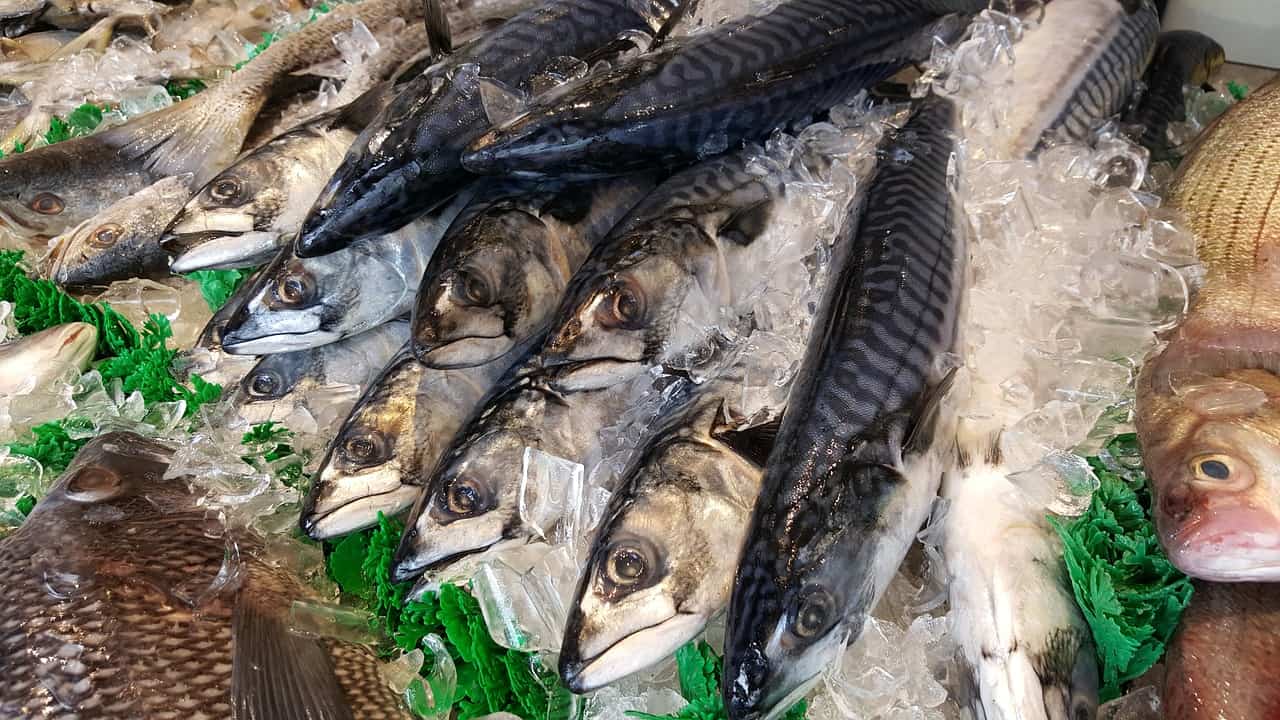As we discussed in our previous article, there are many health benefits of Omega-3 fatty acids. Unfortunately, in modern society, most women and men do not get enough of this essential fatty acid in their diet.
To increase the amount of Omega-3 fatty acids levels in our diet, we can either choose to eat foods that are rich in Omega-3s, or we can take additional Omega-3 supplements such as algae or fish oil. Read this article for some of the best vegan Omega-3 products available.
In this article, we will focus on some simple foods that are high in Omega-3s that you can add to your diet today.
Contents
7 Foods With Omega-3 Fatty Acids
The following list of health foods include both vegetarian and non-vegetarian options. This way, everyone can get some information that they can use to get healthy.
Not only are the following foods healthy and nutritious, but they are also delicious and sustainable too! We have ignored some oils like canola oil because they are purified with hexane and can cause hormone disruption.
1. Walnuts
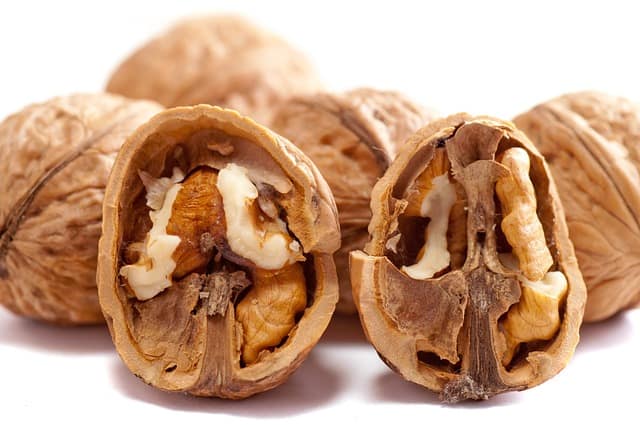 Did you know that walnuts are the only tree nut that is significantly high in Omega-3 fatty acids?
Did you know that walnuts are the only tree nut that is significantly high in Omega-3 fatty acids?
This tasty food contains both protein and healthy fats. There are 2.5 grams of alpha-linolenic acid (ALA) in each 1 ounce serving of walnuts. ALA is one of the 3 types of Omega-3 fatty acids that we consume. (1)
Try adding walnuts to salads and recipes! Or replace other nuts in your diet like almonds and peanuts with walnuts. This will increase your daily Omega-3 intake while lowering the amount of Omega-6 fatty acids you are eating. This will start to trigger health benefits.
You can also use walnut oil as dressing on salads!
2. Flax
According to the Canadian Journal of Cardiology, the use of flax seeds has been supported for its ability to combat cardiovascular disease. This is because it is one of the richest plant sources of Omega-3 fatty acids.
Because it is a plant, the primary source of it comes from ALA. In 1 tablespoon of flax, you get 2.57 grams of this essential fatty acid. (2) Another great bonus of these little seeds is that it is low in Omega-6, which makes it ideal for decreasing inflammation due to its Omega-6 to Omega-3 ratio of 1:4.
When choosing to purchase flax, look for ground flaxseeds. Whole flax are hard to digest and may pass through your system undigested, which means you may not get the health benefits. Therefore, by purchasing the ground version, your body can access all the nutritional value.
One great way to enjoy flax is to put them into smoothies! Also, flaxseed oil is another option to try out.
3. Chia
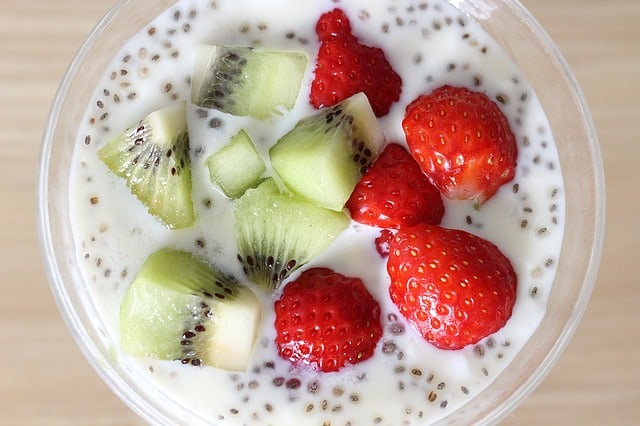 Another super food that is high in Omega-3 fatty acids is chia seeds. With 17.83 grams of Omega-3 and only 5.84 grams of Omega-6 per 100 g serving, these are great for lowering inflammation. Medical research has shown that some other health benefits of chia are their ability to help lower blood pressure and to improve blood sugar levels. In other words, they help prevent heart disease. (3)
Another super food that is high in Omega-3 fatty acids is chia seeds. With 17.83 grams of Omega-3 and only 5.84 grams of Omega-6 per 100 g serving, these are great for lowering inflammation. Medical research has shown that some other health benefits of chia are their ability to help lower blood pressure and to improve blood sugar levels. In other words, they help prevent heart disease. (3)
Unlike flaxseeds, chia seeds have soft shells. Therefore, they are easy to digest and do not need to be ground. Also, when added to water or liquids, chia expand and take on a pudding type texture.
Try adding chia to cereal or putting them on top of your yogurt.
4. Wild Atlantic Mackerel
By now, most people know that fatty fish contain large amounts of Omega-3 fatty acids. An often, the first fish that comes to mind is salmon. Although it is high in Omega-3s, there are a few drawbacks that make it less healthy for you and the environment.
First off, farm raised salmon is filled with pollutants and antibiotics. These two can have potentially dangerous health effects like causing cancer and making your body resistant to antibiotics and unable to fight off infections.
Secondly, wild salmon is often overfished, which can have detrimental effects on our oceans. It is also very expensive.
A great alternative is wild Atlantic mackerel. These fish aren’t in danger of being overfished. Also, for every 100 g serving, they contain 4.1 grams of Omega-3. Fish contain eicosapentaenoic acid (EPA) and docosahexaenoic acid (DHA), which are the other two types of Omega-3 fatty acids.
EPA and DHA are more efficient than ALA because they are easily absorbed.
5. Hemp Hearts
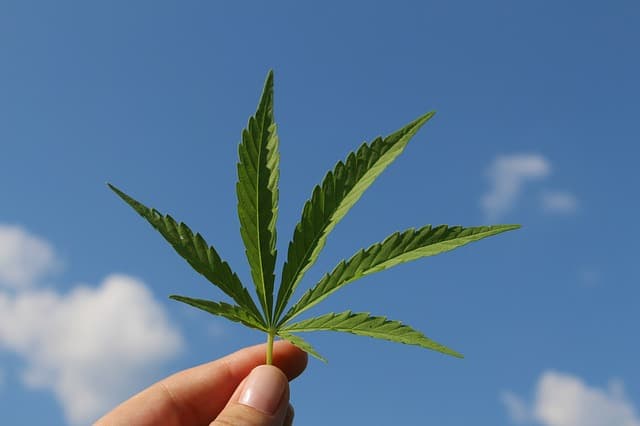 Hemp seeds are another Omega-3 food that is an excellent addition to a healthy diet. With 8.52 grams of Omega-3 and 21.3 grams of Omega-6 per 100 gram serving, it has a great ratio of fatty acids at 3:1.
Hemp seeds are another Omega-3 food that is an excellent addition to a healthy diet. With 8.52 grams of Omega-3 and 21.3 grams of Omega-6 per 100 gram serving, it has a great ratio of fatty acids at 3:1.
Although hemp is a plant in the cannabis family, it does not have any psychotropic effects. In other words, eating the nutritious hemp seeds will not get you high. But hemp seeds do have some notable benefits. First, it helps with reducing blood clotting, which can help prevent strokes and heart attacks. Secondly, it may play a role in helping to lower blood pressure. (4)
One extra bonus of hemp is that it is one of the fastest growing plants. This is great for sustainability!
Hemp seeds are great for adding to a salad or putting in soups!
6. Spirulina
If you haven’t heard of spirulina, it is a form of blue-green algae. Although it doesn’t have as high of Omega-3 content as the other foods on this list because of its low fat content, it does have some benefits.
First off, it is a plant, that contains DHA and EPA which are forms of Omega-3 fatty acids that are highly absorbed. Secondly, it has a good ratio of Omega-6 to Omega-3 at 1.5:1.
This makes it ideal for a supplement. When the fats are extracted, and it is turned into algae oil, you can get a lot of great plant-based omega-3 quickly.
One added benefit of spirulina is that it is a plant based protein source that contains all 9 essential amino acids!
7. Seaweed
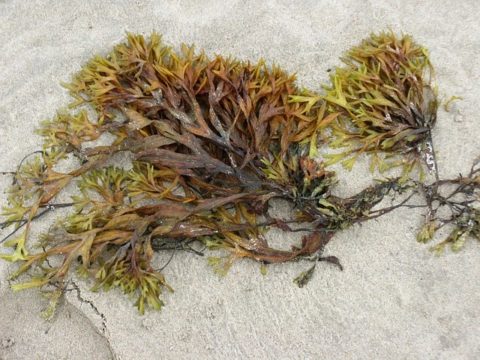 Just like spirulina, seaweed is another food that contains Omega-3 fatty acids. Although the amount of this essential fatty acid varies from different species of seaweed, the ratio of essential fatty acids is good. Specifically, the range varied, but in most cases,the ratio was better than 1:1. (5)
Just like spirulina, seaweed is another food that contains Omega-3 fatty acids. Although the amount of this essential fatty acid varies from different species of seaweed, the ratio of essential fatty acids is good. Specifically, the range varied, but in most cases,the ratio was better than 1:1. (5)
With overfishing depleting the oceans of fish, choosing plants that originate from the sea is a good idea. Mainly because both seaweed and spirulina contain DHA and EPA.
Finally, seaweed is very abundant. This means that by eating it you are having very little impact on our planet.
Summary
When most people think of foods that contain Omega-3 fatty acids, they often think of fish. Since fatty fish contains EPA and DHA, it is one of the best sources of Omega-3 fatty acids. But there are other options as well.
These other plant-based sources are more sustainable and are easier to incorporate into your diet. With so many options, every day you can eat a variety of them.
Many of these foods also come in an oil form like flaxseed oil. This isolated fat allows for even easier access to these nutrients.
Combining different strategies will ensure that you are having the optimal ratio of fatty acids. First, eat foods high in Omega-3s. Secondly, avoid foods that are highly processed and are high in Omega-6. Finally, take high quality Omega-3 supplements such as algae or fish oil when needed.
By following all three of the above strategies, you will be on your way to having optimal fatty acid ratios in your diet. This will help you to reduce the risk of heart disease and cancer which will lead to a healthy life.
References:
(1) Alpha-Linolenic Acid – California Walnuts
(2) The Cardiovascular Effects of Flaxseed and It’s Omega-3
(3) Chia Seeds 101: Nutrition Facts and Health Benefits
(4) The Cardiac and Haemostatic Effects of Dietary Hempseed
(5) Polyunsaturated Fatty Acids in Various Macroalgal Species

My passion for health and wellness started in 2009. My personal mission is to help inspire and guide people on their health journey. I am currently a NASM certified nutrition coach.
